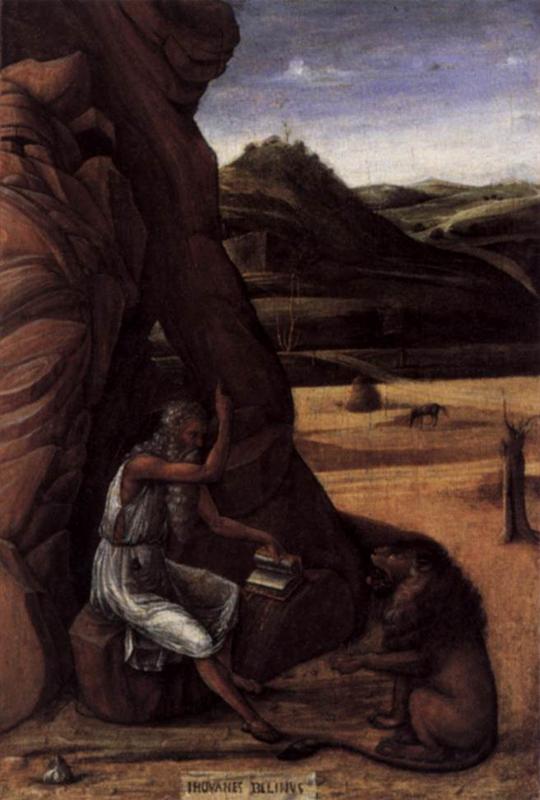Getty Museum, Getty CenterOctober 10, 2017 – January 14, 2018
One of the most beloved and influential religious painters of the Italian Renaissance, Giovanni Bellini (Venice, about 1435-1516) was also a master in depicting landscape. His paintings of religious scenes often featured evocative natural settings that were as important and affecting as their human subjects.
On view October 10, 2017, through January 14, 2018, Giovanni Bellini: Landscapes of Faith in Renaissance Venice presents 12 paintings and one drawing that explore the poetic role played by the natural world in the artist’s religious compositions. The exhibition includes several masterpieces that rarely travel, making this an exceptional opportunity to experience the artistic beauty and iconographic complexity of Bellini’s art.
“Giovanni Bellini skillfully employed natural and built features in his imagery to complement religious subjects and enhance the contemplative, meditative potential of his paintings,” said Timothy Potts, director of the J. Paul Getty Museum. “Thanks to the loan of a number of masterpieces from generous institutions in Europe and the United States, our visitors will be able to experience directly the poetic beauty that made Bellini one of the greatest masters of the Renaissance, and has kept him on the list of the most admired and coveted artists ever since. The exquisite beauty and delicate charm of these paintings have an aesthetic and spiritual power way beyond their modest scale. As a focused experience of sublime beauty in the service of devotion, this exhibition is as good as it gets. Not to be missed is a gross understatement.”
Giovanni Bellini was one of the most illustrious artists of the Italian Renaissance, admired for his accomplishments in all genres of painting practiced in 15th-century Venice, including religious subjects, mythological scenes, and portraits. He began his career painting small pictures intended for private devotion, later creating emotionally intense portraits as well as innovative altarpieces. Toward the end of his long life he added mythological and secular allegory to his repertoire. He was also one of the artists who championed the shift from painting in egg tempera, traditional in Italy, to painting in oil, a technique pioneered in the Netherlands. He operated a busy studio in Venice and trained many younger artists, including Giorgione and Titian. A standout among great artists both in his family and in his community, Bellini was one of the key figures who elevated the Venetian school to international repute.
“The devotional components of Giovanni Bellini’s pictures, such as a sole crucifix in a landscape or an image of Saint Jerome reading in the wilderness, are always infused with a refined sensitivity to the natural world,” said Davide Gasparotto, senior curator of paintings at the Getty Museum and curator of the exhibition. “Bellini’s paintings feature expressively charged interpretations of sacred characters and symbols immersed in a realm of lived experiences in a way that was entirely unprecedented in Italian painting. Through this poetic use of landscape, Bellini elevated the devotional work of art to an object of worthy aesthetic admiration, thus ushering in a new chapter in the history of European painting.”

- Christ Blessing, about 1500, Giovanni Bellini, tempera and oil on wood panel. Kimbell Art Museum, Fort Worth, Texas.
- Sacred Allegory, about 1500-1504, Giovanni Bellini, tempera (?) and oil on wood panel. Gallerie degli Uffizi, Florence. Photo credit: Scala/Ministero per i Beni e le Attività culturali / Art Resource, NY.

The exhibition also includes one of Bellini’s earliest surviving works, Saint Jerome in the Wilderness, about 1455, which depicts the saint as a penitent hermit blessing a lion. He reads in a cave that dominates the picture’s foreground, while a broad, deep landscape opens out into the background. Rather than evoking the Syrian desert of the fable, the scenery recalls the gentle slope of the Venetian mainland, a feature of many of Bellini’s paintings.
about 1495-1500
Giovanni Bellini
tempera (?) and oil on wood panel.
Collezione Banca Popolare di Vicenza
about 1485
Giovanni Bellini
tempera and oil on wood panel.
National Gallery, London. Bought, 1855.
© National Gallery, London / Art Resource, NY
about 1458-59
Giovanni Bellini
oil and tempera on wood panel.
Fondazione Musei Civici di Venezia, Museo Correr, Venice.
Photo credit: Cameraphoto Arte, Venice / Art Resource, NY
Crucifixion
1465 - 1470
Giovanni Bellini (Italian, about 1431/1436 - 1516)
Tempera on wood panel
Paris, Musee du Louvre, Departement des Peintures
© RMN-Grand Palais / Art Resource, NY. Photo: Michel Urtado
Giovanni Bellini (Italian, about 1431/1436 - 1516)
Pen and brush and brown ink
The Samuel Courtauld Trust, The Courtauld Gallery, London
The Courtauld Gallery, London
Landscape (detail)
about 1501
Giovanni Bellini
tempera and oil on wood panel.
Gallerie dell’Accademia, Venice. Photo credit: Scala/Ministero per i Beni
e le Attività culturali / Art Resource, NY
about 1485
Giovanni Bellini
tempera and oil on wood panel.
National Gallery, London. Bought, 1855.
© National Gallery, London / Art Resource, NY








Comments
Post a Comment